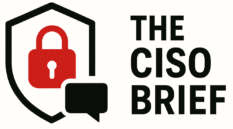Top Highlights
-
Data Breach Notification: The North Face has alerted customers about personal information theft due to credential stuffing attacks on its website in April 2025, marking its fourth incident of this type since 2020.
-
Exposed Information: Compromised data includes full names, purchase history, addresses, email addresses, dates of birth, and telephone numbers; however, payment information was secure.
-
Cybersecurity Failures: The brand has faced persistent cybersecurity issues, with previous attacks affecting over 200,000 customers and a major ransomware incident in December 2023 that impacted 35 million customers.
- MFA Consideration: The absence of mandatory multi-factor authentication (MFA) on user accounts has been cited as a significant vulnerability, allowing attackers to exploit recycled credentials across platforms.
The Issue
In April 2025, The North Face, a prominent outdoor apparel retailer under VF Corporation, alerted its customers to a serious cybersecurity breach involving credential stuffing attacks. These attacks specifically targeted the company’s website, exploiting previously leaked login credentials from other data breaches. Despite the company generating over $3 billion annually and deriving about 42% of its sales from e-commerce, this incident marks a troubling continuation of its cybersecurity failures, as it follows multiple similar attacks since 2020.
The breach exposed sensitive customer information, including names, purchase histories, addresses, email addresses, birth dates, and phone numbers, although payment details were safeguarded through an external provider. As the company sent damage notifications, including a summary shared with the Vermont Attorney General, it became evident that this incident was part of a broader trend, reflecting The North Face’s insufficient implementation of multi-factor authentication to protect user accounts. With prior incidents leading to exposure of over 200,000 accounts and even a significant ransomware attack affecting 35 million customers, the ongoing vulnerability raises urgent questions about the adequacy of The North Face’s cybersecurity measures, echoing concerns within the larger landscape of online security. Reporting on this event, BleepingComputer sought further clarification from The North Face regarding the scope of affected customers, awaiting a formal response as the situation unfolds.
What’s at Stake?
The recent credential stuffing attacks against The North Face not only jeopardize the personal information of its customers but also pose a broader risk to various stakeholders, including other businesses and organizations. As a prominent retailer generating over $3 billion annually, The North Face’s security vulnerabilities can create a ripple effect, undermining consumer trust across the retail sector. Customers whose data has been compromised may become increasingly wary of sharing sensitive information with any brand, fearing similar attacks could occur elsewhere. This erosion of confidence can lead to decreased consumer engagement and revenue losses for numerous businesses that rely on secure e-commerce platforms. Furthermore, companies part of the VF Corporation umbrella—like Vans and Timberland—could experience collateral damage to their reputations as customers associate vulnerabilities with the entire brand family. In an interconnected digital landscape where credential reuse is prevalent, a single incident can catalyze widespread apprehension about cybersecurity, necessitating that organizations fortify their defenses and possibly adopt more robust measures, such as multi-factor authentication, to mitigate threats and safeguard against future breaches.
Possible Remediation Steps
In light of recent cybersecurity threats, particularly the April credential stuffing attack on The North Face, addressing these vulnerabilities promptly is vital for safeguarding customer data and maintaining trust.
Mitigation Steps
- Implement Multi-Factor Authentication (MFA)
- Enforce Strong Password Policies
- Conduct Regular Security Audits
- Monitor Account Activity for Anomalies
- Educate Customers on Phishing Risks
- Employ Rate Limiting to Thwart Automated Attacks
- Utilize Web Application Firewalls (WAF)
- Promote Password Managers for Secure Storage
NIST CSF Guidance
The NIST Cybersecurity Framework (CSF) emphasizes the importance of identifying and protecting critical assets, detecting incidents, and responding effectively. For more detailed strategies, refer to NIST Special Publication (SP) 800-63, which provides guidelines on digital identity management and authentication protocols.
Continue Your Cyber Journey
Explore career growth and education via Careers & Learning, or dive into Compliance essentials.
Learn more about global cybersecurity standards through the NIST Cybersecurity Framework.
Disclaimer: The information provided may not always be accurate or up to date. Please do your own research, as the cybersecurity landscape evolves rapidly. Intended for secondary references purposes only.
Cyberattacks-V1

